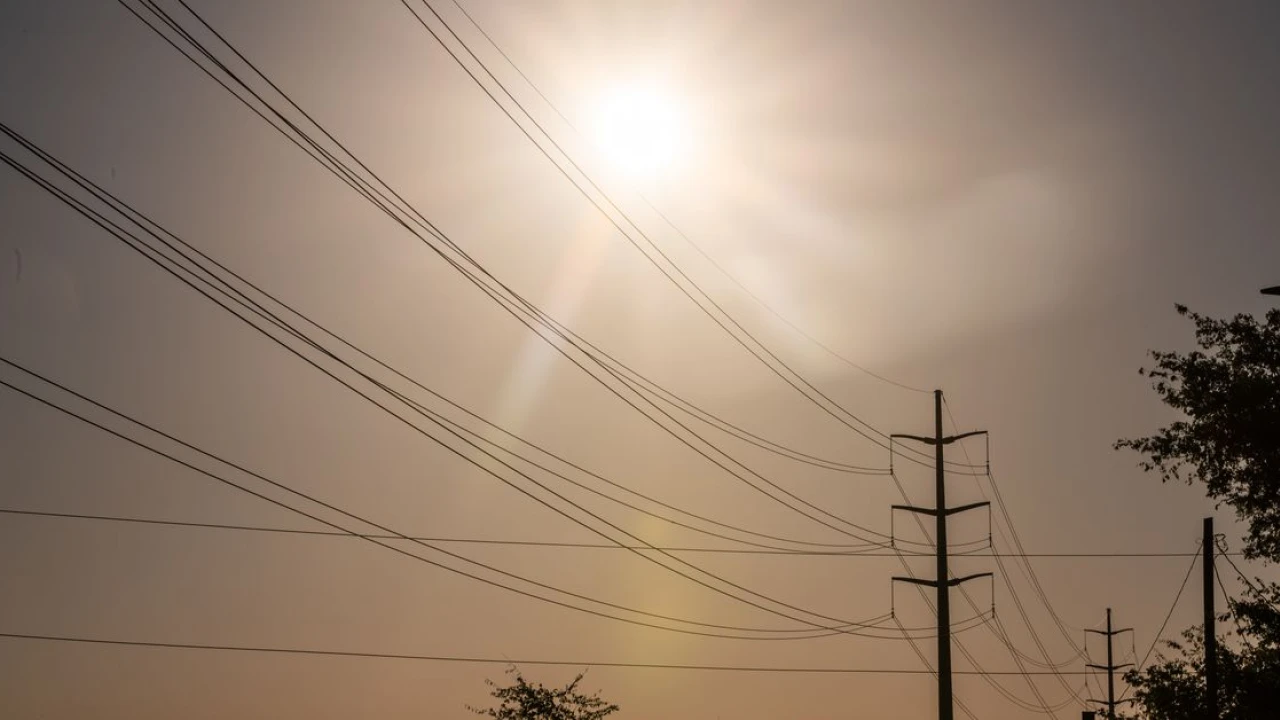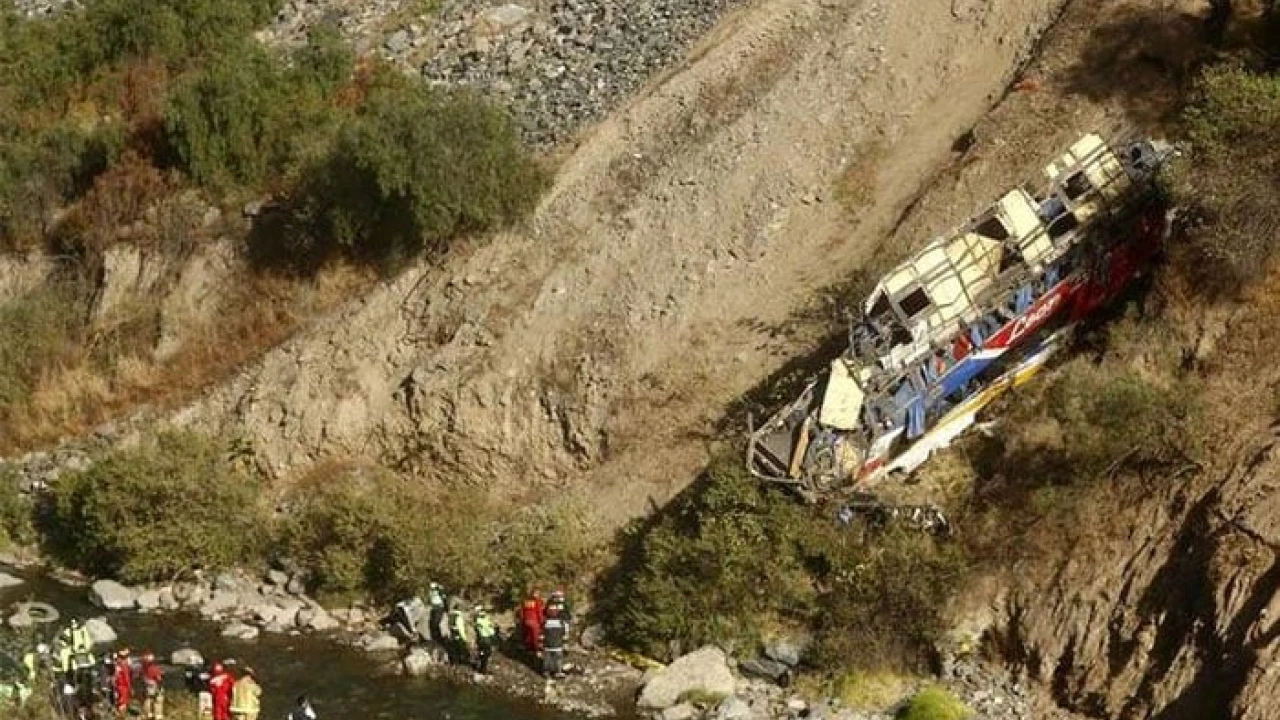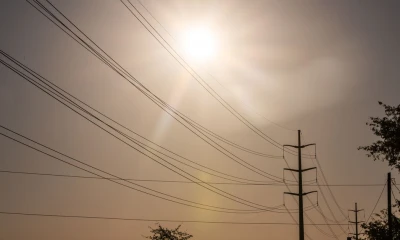-


PTI Train March Over Imran Khan Release | News Bulletin | 10 AM | 28 April 2024 | GNN
-


PTI Train March Updates | Imran Khan Release? | Breaking News | GNN
-


PM Shehbaz Sharif Takes Strict Notice | Breaking News | GNN
-


Uzma Bukhari Angry On CM KP Ali Amin Gandapur | News Bulletin | 12 PM | 28 April 2024 | GNN
Regional
We could be heading into the hottest summer of our lives
High temperatures across the US have the potential to increase risks for drought, wildfires, and hurricanes.

The United States could be in for another scorcher this summer, per a new study from the National Weather Service (NWS). And that could mean more extreme weather events — as well as heightened health concerns.
The NWS outlook, released this month, found that many parts of the US — including New England and the Southwest — are likely to have higher than average temperatures from June through August. In recent years, hotter summer temperatures have been driven by climate change and, in some cases, the arrival of a climate pattern known as La Niña, which contributes to drier conditions in certain regions in the US.
According to the Weather Channel, there’s a possibility this summer could even wind up being one of the hottest on record, adding to existing milestones.

A hotter summer could have serious environmental consequences, including a higher risk of drought, hurricanes, and wildfires in some areas. Additionally, it could pose more health threats to people, with heat-related fatalities — including those tied to cardiovascular disease — increasing in the US in the last decade.
Broadly, warmer summers have prompted people to take more precautions when it comes to the activities they engage in, become more dependent on resources like air conditioning, and remain on guard for extreme weather events affecting their water supplies and air quality.
This summer is expected to be no different, which is why the National Oceanic and Atmospheric Administration and the CDC recently rolled out tools aimed at forecasting when extreme heat waves will strike this summer, with the goal of alerting people about these events so they can better prepare for them.
The reasons this summer could be so hot
Climate change is a major factor in the overall warming that the Earth is experiencing — including hotter summers, experts say. “The big obvious player is greenhouse gases that are producing long-term climate change,” William Boos, a UC Berkeley earth and planetary sciences associate professor, told Vox.
As a Washington Post analysis found in 2022, the average summer temperature from 2017–2021 was 1.7 degrees Fahrenheit warmer than the average US summer temperature from 1971–2000, an increase that coincided with record-breaking annual temperatures overall in recent years. The outlook for this year could well make this summer a continuation of that trend.
The La Niña climate pattern could also be a contributor to higher heat levels this year if it occurs in the coming months. La Niña is an atmospheric phenomenon involving strong winds that result in cooler temperatures in the Pacific Ocean. The cold water alters the course of high altitude air currents known as the jet stream, which contributes to weather changes.
While La Niña can lead to a “cooling down of global temperatures ... it causes changes in wind patterns that can cause some areas to be warmer than normal in summer,” says University of Pennsylvania climate scientist Michael Mann.
In the US, the areas that are most likely to see increased temperatures due to La Niña tend to be in the West and South, and that’s poised to be the case this time as well.
Heat could mean more drought, wildfires, and hurricanes
Higher temperatures in the summer can directly contribute to the proliferation of droughts because heat increases water evaporation and the loss of moisture from plants. Droughts often reduce water supplies for people and animals, and impact the ecosystems of flora and fauna that live in bodies of water as well. According to the National Weather Service, the Southwest, part of the Pacific Northwest, and Hawaii are a few of the regions susceptible to drought this coming summer.
:no_upscale()/cdn.vox-cdn.com/uploads/chorus_asset/file/25420532/season_drought.png)
A hotter, drier summer season can also increase the likelihood of wildfires in certain areas because it means the ground is drier and the area is more likely to catch fire. When the temperature is warmer, there can be a higher frequency of lightning, too, which can ignite more wildfires.
According to projections from the National Interagency Coordination Center, which has published an outlook through July, the Southwest, Mountain West, and Hawaii are similarly areas that are poised to see greater wildfire risk this summer. California, meanwhile, could have a reduced risk compared to past years, in part because of the precipitation it’s experienced this year.
:no_upscale()/cdn.vox-cdn.com/uploads/chorus_asset/file/25420535/month4_outlook.png)
In recent years, wildfires have disrupted nearby communities, damaging people’s homes and displacing them, while also affecting people hundreds of miles away. Wildfires in Maui last year — which were sparked partly because of ongoing drought — killed around 100 people, and many of those who lost their homes have yet to find new ones. A major wave of wildfires in Canada affected large swaths of the US as well when smoke drifted over and reduced the air quality.
[Related: How Maui’s wildfires became so apocalyptic]
Higher temperatures could also lead to a more intense hurricane season, according to a group of University of Pennsylvania climate scientists led by Mann. In an analysis published this week, they noted that this Atlantic season could feature the most named hurricanes on record due partly to warmer ocean temperatures. The scientists estimate that there could be anywhere between 27 and 39 named tropical storms, roughly twice as many hurricanes as occur in a standard season.
Because evaporation increases when it’s hotter, hurricanes can pick up more moisture from oceans under these circumstances, leading to a higher frequency of more aggressive storms.
Generally, higher temperatures also raise worries about health issues and fatalities people may face due to conditions like heat stroke. As the Centers for Disease Control and Prevention notes, cities like St. Louis and Philadelphia have seen increases in death rates during heat waves in the past, and hospitals tend to see a spike of admissions related to cardiovascular and respiratory diseases in these times.
Since people’s hearts are under more strain when it’s hot, this puts additional stress on those navigating preexisting health issues as well as vulnerable groups like the young, elderly, and pregnant people. Additionally, people’s standard mechanism for cooling themselves — sweating — can be insufficient when it’s especially hot and particularly when there’s high humidity.
“In an average year in the U.S., heat kills more people than any other type of extreme weather,” Kristina Dahl, a senior climate scientist at the Union of Concerned Scientists, previously told Scientific American.
Regional
Magnitude 4.2 quake hits Turbat in Balochistan
The epicenter of the earthquake felt in Balochistan early in the morning was near Turbat

Turbat: Earthquake tremors have been felt in the Turbat region of Balochistan and surrounding areas.
According to the seismological center, the magnitude of the earthquake was 4.2 and the depth was 13 kilometers.
The epicenter of the earthquake felt in Balochistan early in the morning was near Turbat.
People ran out of their houses reciting Holy verses, however, no loss of life or property was reported due to the earthquake.
Pakistan
15 killed as bus falls into ditch in Chilas
The initial reports stated that there were more than 30 passengers on the bus and 15 died in the accident

Chilas: A passenger bus fell into a ditch at Yashukhal Das on the Karakoram highway in Chilas as a result of which 15 passengers died in the accident, while the death toll in the accident is expected to increase.
According to rescue officials, the initial reports stated that there were more than 30 passengers on the bus and 15 died in the accident and various got injured.
The bodies of those who died in the accident and the injured are being shifted to the hospital.
According to officials, as soon as the accident was reported, rescue teams were dispatched, who reached the accident site and started rescue operations.
-

 Sports 21 hours ago
Sports 21 hours agoPakistani squad for Ireland, England series announced
-

 Pakistan 1 day ago
Pakistan 1 day agoIPP gets another shock
-

 Technology 19 hours ago
Technology 19 hours agoAI could risk 17pc of jobs in Saudi Arabia: experts
-

 Pakistan 1 day ago
Pakistan 1 day agoPM Shehbaz, Zardari pays tribute on Labour Day
-

 Pakistan 1 day ago
Pakistan 1 day agoInterior Minister visits Pakistan Coast Guards’ headquarters
-

 Regional 2 days ago
Regional 2 days agoPunjab govt makes transfer, posting of senior officers
-

 Sports 2 days ago
Sports 2 days agoEngland announce squad for series against Pakistan
-

 Pakistan 2 days ago
Pakistan 2 days agoInt'l Labour Day being observed across country today













